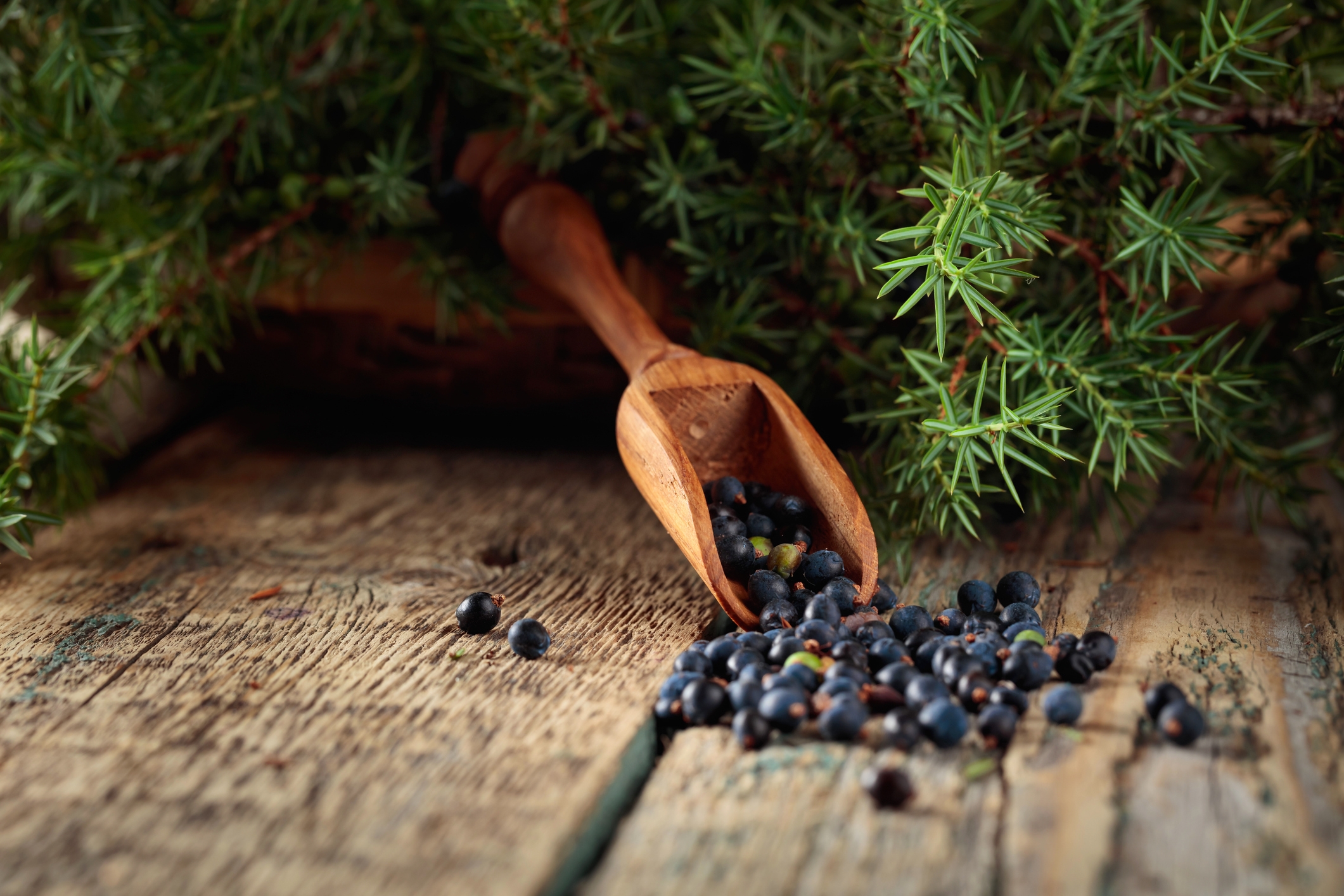Juniper
Juniperus communis, commonly known as the common juniper, is a coniferous evergreen shrub native to regions across the Northern Hemisphere. Recognizable by its needle-like leaves and aromatic blue-black berries, the plant holds cultural, medicinal, and culinary significance. Its berries, though in fact cones, are notably used as the primary flavoring agent in gin, a testament to their aromatic potency.

More on Juniper
About
Common juniper displays a wide range of growth forms, from low-growing ground covers to small trees, depending on its environment. Its needle-like leaves grow in whorls of three and are sharp-tipped. The juniper “berries” are actually female seed cones, taking two to three years to fully mature. As they ripen, their color shifts from green to a dark purple-blue, and they emit the distinctive aromatic, slightly peppery scent.
The berries contain essential oils, tannins, sugars, and resins, giving them their unique flavor profile. While junipers are widespread, Juniperus communis is specifically renowned for its culinary application, especially in spirit distillation.
History
The use of juniper has deep historical roots. In various cultures, it was believed to ward off evil spirits and was used for its medicinal properties. Its antiseptic and diuretic qualities made it a popular remedy in traditional medicine for ailments like urinary tract infections, rheumatism, and digestive problems.
The distillation of spirits using juniper can be traced back to the Middle Ages, with the creation of early forms of gin in the Low Countries. It wasn’t long before the British adopted and popularized gin, with juniper berries being its defining ingredient.
Indigenous peoples of Alberta have historically used juniper for various purposes. Juniper branches and berries have been utilized in traditional medicines, and the wood, known for its resistance to rot, has been employed for crafting and tool-making.
Ways To Cook
Juniper berries' intense flavor makes them a potent ingredient in culinary applications:
- Gin Production: The primary use for juniper berries, providing the spirit’s distinctive flavor.
- Meat Marinades: Especially game meats like venison or duck, benefit from the robust flavor of crushed juniper berries.
- Sauces: Juniper-infused sauces can elevate dishes, especially those with robust meats.
- Pickling: Juniper can be added to pickling solutions for an aromatic twist.
- Teas: A warm infusion with juniper berries can offer a piney, aromatic tea.
- Baking: In some regions, juniper is used as a spice in baked goods, imparting a unique flavor.
- Herbal Remedies: Given its historical medicinal use, juniper berry infusions are still employed in some traditional remedies.
When using juniper in cooking, it’s essential to exercise restraint, as its flavor can easily dominate. Also, sourcing berries from Juniperus communis is crucial, as some other juniper species can be inedible or toxic.
